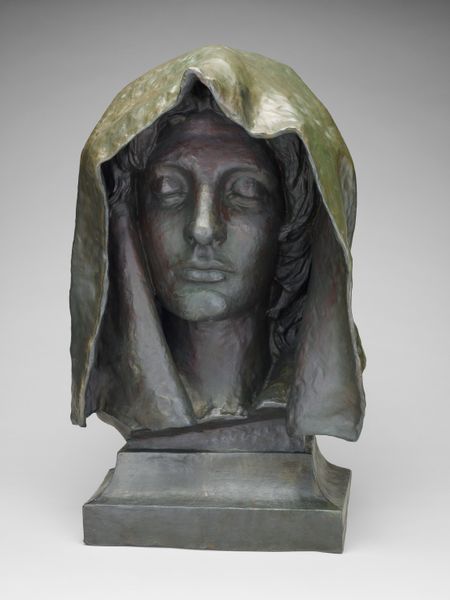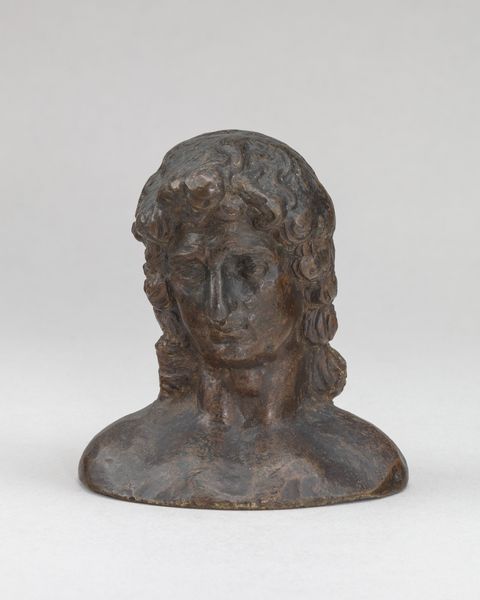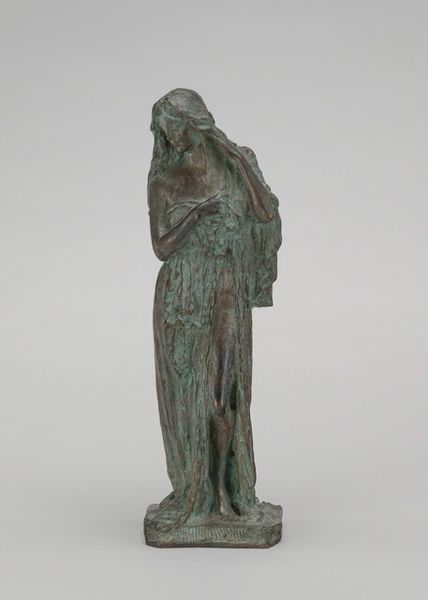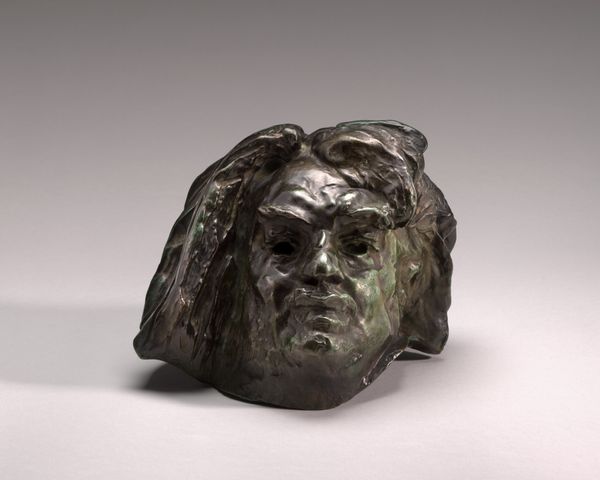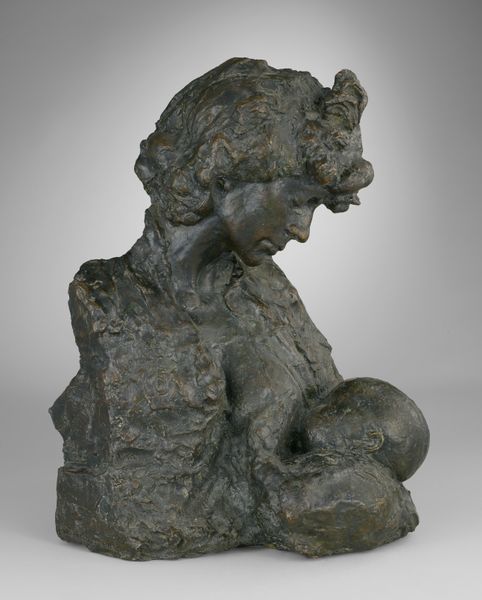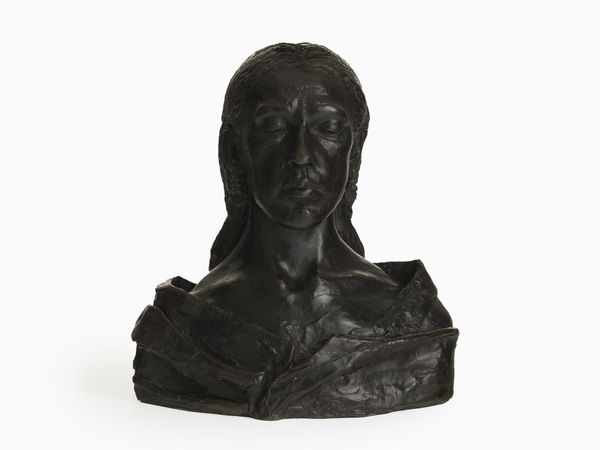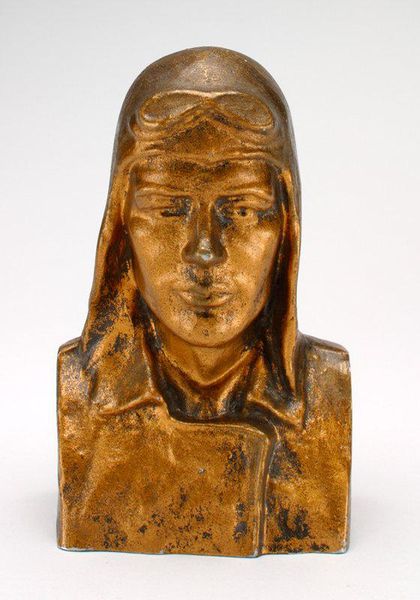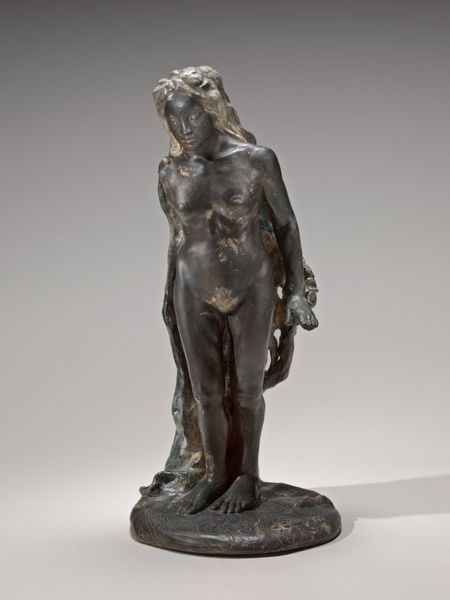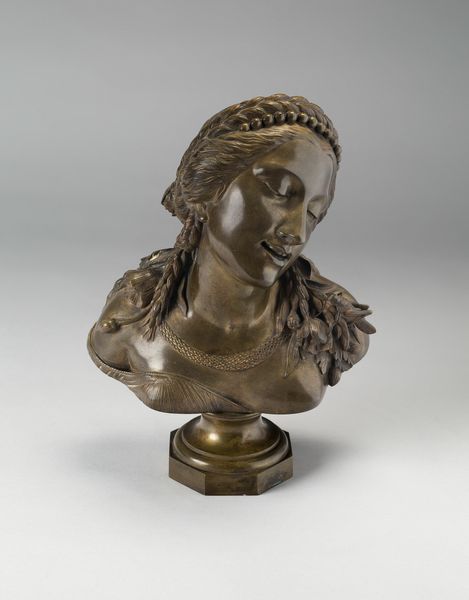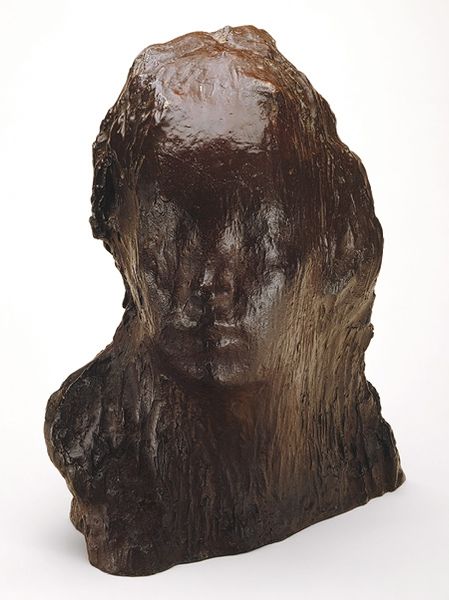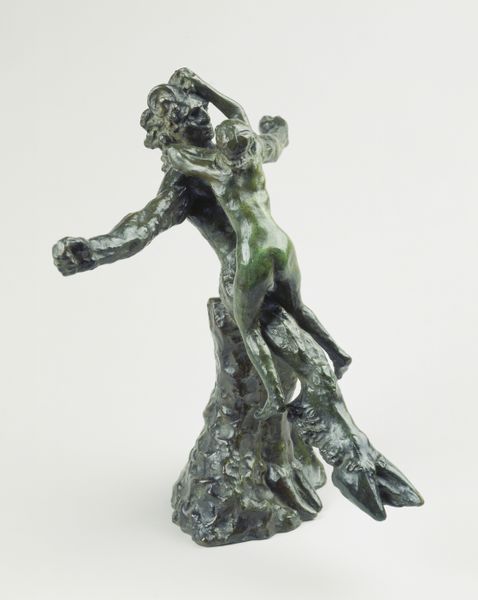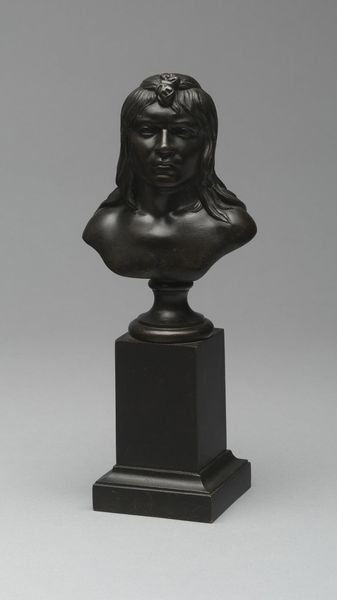
Dimensions: overall: 49.5 x 48.5 x 35.3 cm (19 1/2 x 19 1/8 x 13 7/8 in.)
Copyright: National Gallery of Art: CC0 1.0
Curator: Here we have Auguste Rodin's "La France," a bronze sculpture from 1904. Editor: There's a somber quality to this bust, a seriousness. The rugged texture of the bronze almost feels like it's been hewn from the very earth. Curator: Indeed. Rodin’s manipulation of the bronze is critical. Notice how the rough, unfinished texture contrasts sharply with the smoothness of the face. This dichotomy sets up a compelling visual tension. Editor: Symbolically, the rough texture could represent the burdens, perhaps even the struggles, of France as a nation. Her gaze is direct but burdened, a weight in her eyes. Is that a Phrygian cap atop her head? Curator: The Phrygian cap is definitely a reference to liberty and the French Revolution. But the treatment is so interesting; the lines aren't clean, the form isn't precise, it resists a classical interpretation. Instead of smooth neoclassical lines, the cap blends in with the almost geological form from which the head arises. Editor: The garment is rendered so abstractly as well, like wind-swept battle flags. It conveys more an idea than a material reality. The cascading elements create a sense of movement, as if the very spirit of France is in motion, a continuous becoming. Curator: Absolutely. The semiotics of the piece hinge on this tension between realism and abstraction. We get a recognizably human face, yet the treatment of the figure departs significantly from mimetic representation, thus evoking a particular affect in the viewer. The piece also seems like a deliberate step away from traditional sculpture of idealized figures of nations, something much more intimate and immediate. Editor: What I find most moving is how the sculpture encapsulates not just the grandeur but also the vulnerability inherent in national identity. It's a tangible symbol of both strength and fragility. Curator: It's in pieces like this where Rodin departs from convention. I've now observed nuances I did not fully appreciate before, too. Thank you. Editor: Yes, a piece layered in complex and sophisticated meaning—my reflections today offer only a start to grasping its national and historical implications.
Comments
No comments
Be the first to comment and join the conversation on the ultimate creative platform.
